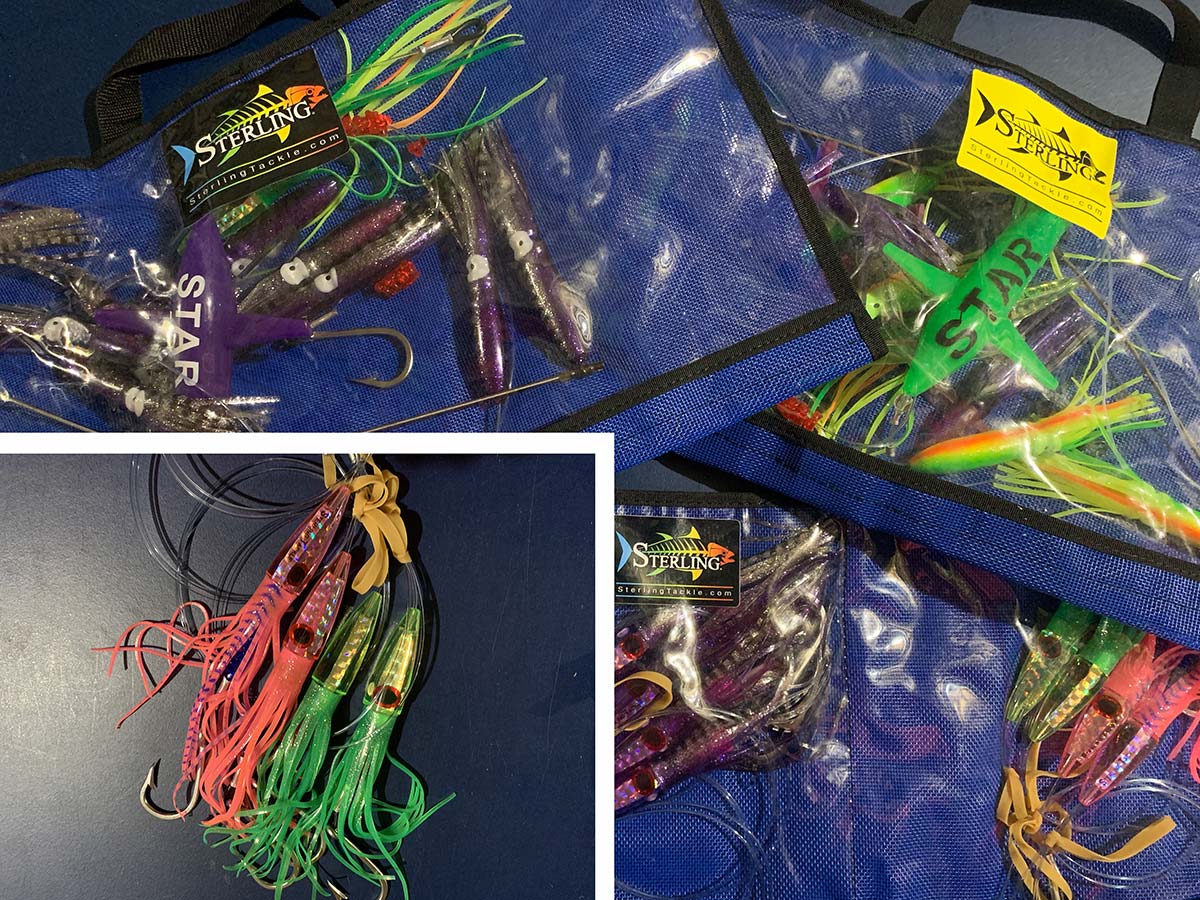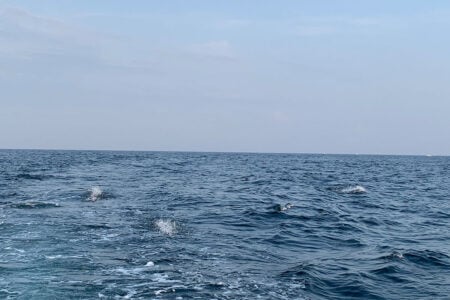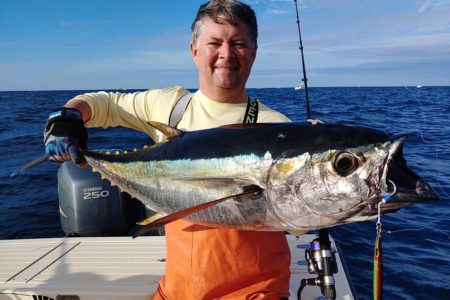
Gearing up for the midrange and inshore troll.
As I was planning to spend more time on the tuna grounds, and after careful research, it became abundantly clear that wide tracker or side trackers have become an absolute force within the spreader bar arena. Sterling Tackle’s owner and designer Steve Bruenig carefully crafted their Wide Tracker spreader bars utilizing a rudder-like keel to send the bars as much as 60 feet outside the boat’s immediate prop wash.
Wide Trackers see plentiful strikes in addition to supplying a tracking path that allows for more presentations to be pulled centrally, therefore creating a larger, more effective spread. A contributing attribute to Sterling’s Tracker Bars is their roots firmly within The Fisherman’s readership; I prefer the fact that the Wide Trackers gained their initial, fish-catching acclaim on the east coast, specifically in our region.
Bluefin traversing our waters can range in size from small footballs to full-blown giants and Tracker Bars are up to the task for that and everything in between. Moreover, the Wide Trackers work extremely well for yellowfin and bigeye should they see time beyond the inshore grounds. As you jump into the tuna trolling game, keep in mind the benefit of getting as many bars into the spread as possible. Sterling makes Tracker Bars in two sizes – 18 inches and 36 inches with multiple colors in each size. My plan is to add to the arsenal each year so I have Wide Trackers in each color with back-ups of my favorites.
Captains should buy their “must haves” before the tuna hit the grounds to ensure maximum readiness. Purple/black, zucchini and green should be on that list. After that, anglers can pick up those models if a certain color gets hot during a stretch of the season. A watchful eye on Sterling Tackle’s Instagram and Facebook page or regular reports in The Fisherman can help anglers note the colors that catch fire. Furthermore, buying stingers in all six color options in both 7 inches and 9 inches allow you to fish different color combinations since the stingers can be readily switched out from the main bar.
When it comes to deployment, the rod holders closest to the bow are the placement for the first set. Yes, Sterling Tackle sharpies run their gear literally within a few feet from the forward running lights! Another set can be sent from the amidships rod station. Generally, the 18-inch Tracker Bar from the bow is sent furthest back while the set of 36-inch bars are dropped to clean water closer to the vessel. Running Tracker Bars off the outriggers, while not necessary, creates an insane breadth of lures! In addition, some captains will run Tracker Bars off from elevated positions where rod holders exist on the T-top to gain some extra tracking. Lastly, Wolfpack Tackle makes advanced, offshore-minded outrodders that are worth a look; they can be used in conjunction with Wide Trackers and flat lines to enhance the spread.
Sterling makes Chaos Bars which contain the same keel that sends presentations outside the wash and are another must when putting together a purchase. The birds and last squids contain rattles that produce more turbulence, noise and splash on the surface, which draws tuna right in. On some outings, I start with the Chaos Bars in the water, while on others, I’ve kept them in the “on-deck circle” in the event of a slow start and changes are desired.
The inshore to mid-shore captains that primarily target school-sized bluefin have a lean toward 6-inch Tracker Bars, while many canyon crews have produced with 6-inch early in the season before going bigger with 9-inch models later on. Some skippers find that the bulb squid versions are more stable on rougher days.
Since captains have a wide-tracking spread, they can clip the schools of tuna without steering the vessel through the school. Working the periphery without plowing through tuna is a perfect way to present trolled baits without spooking the body of fish and allowing the bite to maintain itself much longer. Not to mention other captains won’t be lobbing profanities at the boat that runs through fish.
What I found helpful were the diagrams of deployment options included on the Tracker Bars page at Sterling Tackle’s website Sterlingtackle.com.




